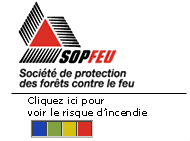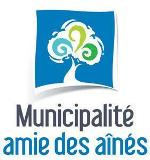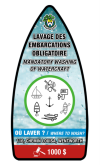Wentworth 

Health & Well being
Late Blight: A Disease to Watch Out for in 2024
Late blight of potato (Phytophthora infestans) is a regulated pest.
The structures that allow this organism to reproduce (spores) are easily transported by wind and can travel tens of kilometers, spreading the disease. It develops rapidly and affected plants can die within days. Community gardens and personal vegetable gardens of citizens where plants are infected with late blight represent an additional risk factor for contamination.
For tomatoes and potatoes, the disease poses a real risk that can cause significant economic losses for agricultural businesses that cultivate them. Late blight must be taken very seriously by all to prevent its spread to production areas.
Moreover, under the Crop Health Protection Act, everyone must take the necessary phytosanitary measures to prevent plants, substrates and other property they own or have custody of from spreading a regulated pest to a commercial crop.
What to do if you detect late blight on your plants?
Late blight does not pose a risk to human consumption, so potato tubers and tomatoes from infected plants can be safely consumed. However, to prevent the spread of the disease:
- Potato tubers harvested from gardens should not be stored for a long period or replanted the following year;
- Affected plants, tubers and fruits should not be composted;
- Affected plants, tubers and fruits should be completely destroyed (burned or sent to waste in a hermetically sealed bag).
For more details, consult this government fact sheet.
Protecting against tick bites to prevent Lyme disease
A reminder about prevention and protection measures from the Department of Public Health for the Laurentians
Saint-Jérôme, June 9th, 2022 - With summer on our doorsteps, the Department of Public Health of the Centre intégré de santé et de services sociaux (CISSS) des Laurentides is urging members of the public to protect themselves against tick bites, as these can cause Lyme disease. Certain areas in the south of the Laurentians are particularly at risk as infected ticks have been found there.
How to protect oneself?
The best way not to contract Lyme disease is to avoid tick bites during outdoor activities. Ticks do not jump nor do they fly, but they can cling to you or to your pet whenever you are in contact with plants e.g. in a garden or yard, or while walking through a forest, wood or tall grass.
To avoid tick bites:
- Preferably walk on a path and avoid tall grass;
- Use an insect repellent on the exposed parts of your body, except your face;
- Wear a hat, closed shoes, long-sleeves and ankle-length pants;
- Tuck your shirt into your pants;
- Tuck your pant legs into your socks or boots;
- Wear light-coloured clothes when you go for a walk. Light coloured clothing makes ticks more visible.
To lear more about identifying ticks, see the  Identification guide for ticks found in Québec.
Identification guide for ticks found in Québec.
What to do in case of a bite?
In case of a bite, remove the tick as soon as possible. Use a tick remover or a pair of tweezers, such as eyebrow tweezers. Avoid using your fingers or nails. The longer a tick stays embedded, the greater the risk of contracting Lyme disease. The risk of the tick being infected depends on the type of tick and the region where it is found.
To learn how to remove an embedded tick from your skin, see the  Advice and steps to follow.
Advice and steps to follow.
Call 811 for Info-Santé or consult a doctor for any of the following situations :
- Redness measuring 5cm or more in diameter;
- Redness that persists after 48 hours;
- You think you have one or more symptoms of Lyme disease in the days, weeks or months following an outdoor activity that my have exposed you to ticks.
Preventive treatment for Lyme disease
If you have been bitten by a tick in certain areas of the south of the region, a doctor or pharmacist may, after examining you, prescribe antibiotics as a preventive measure. The following municipalities are of particular concern: Deux-Montagnes, Mirabel, Oka, Pointe-Calumet, Saint-Eustache, Saint-Joseph-du-Lac, Saint-Placide, Sainte-Marthe-sur-le-Lac, as well as the territory of the Kanesatake community.
To find all the information about Lyme disease, visit  Lyme disease
Lyme disease
or visit the Health - Protecting yourself from mosquito and tick bites
Search
| ||||||||||||||||||||||||||||||||||||||||||
|
More news... |



















